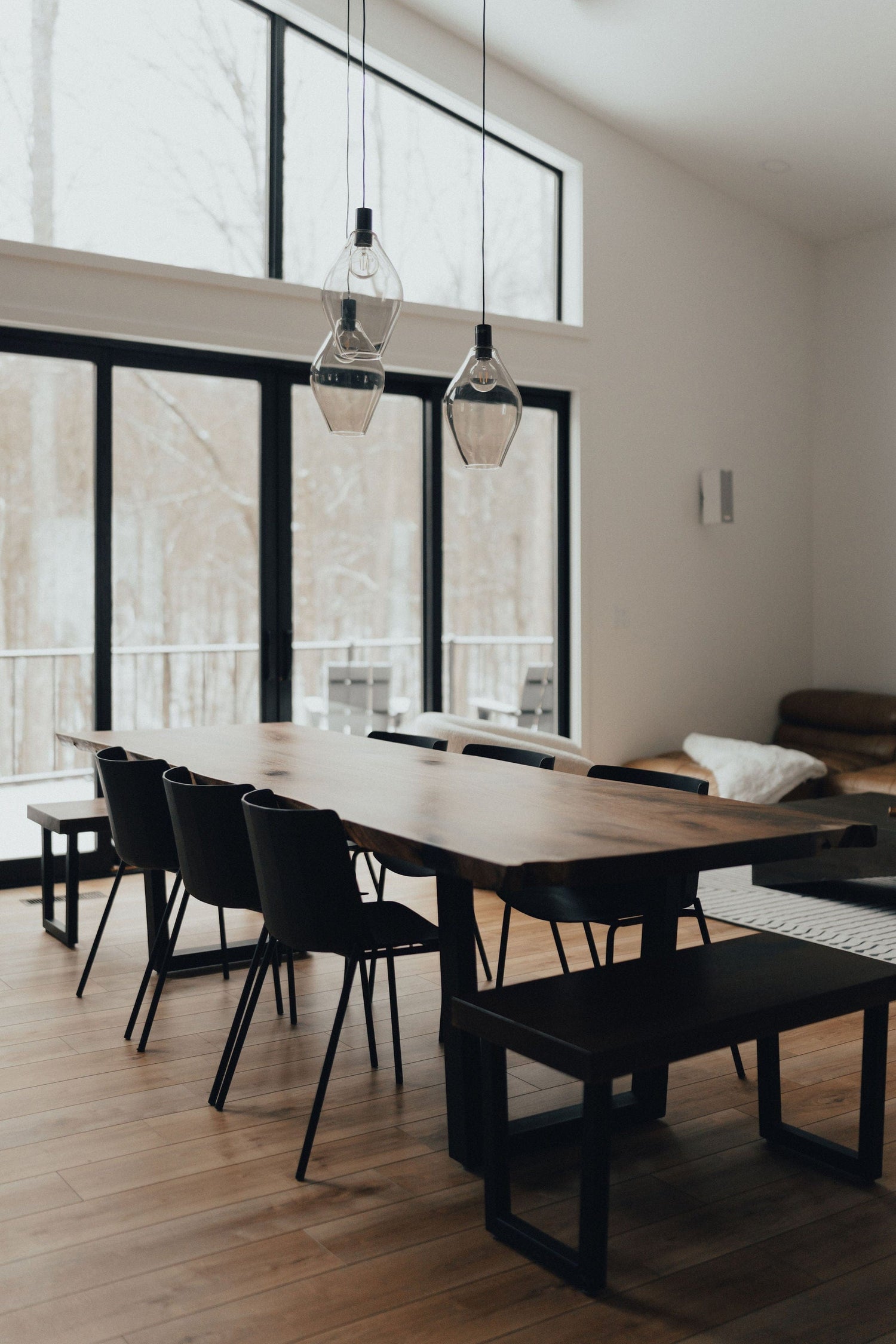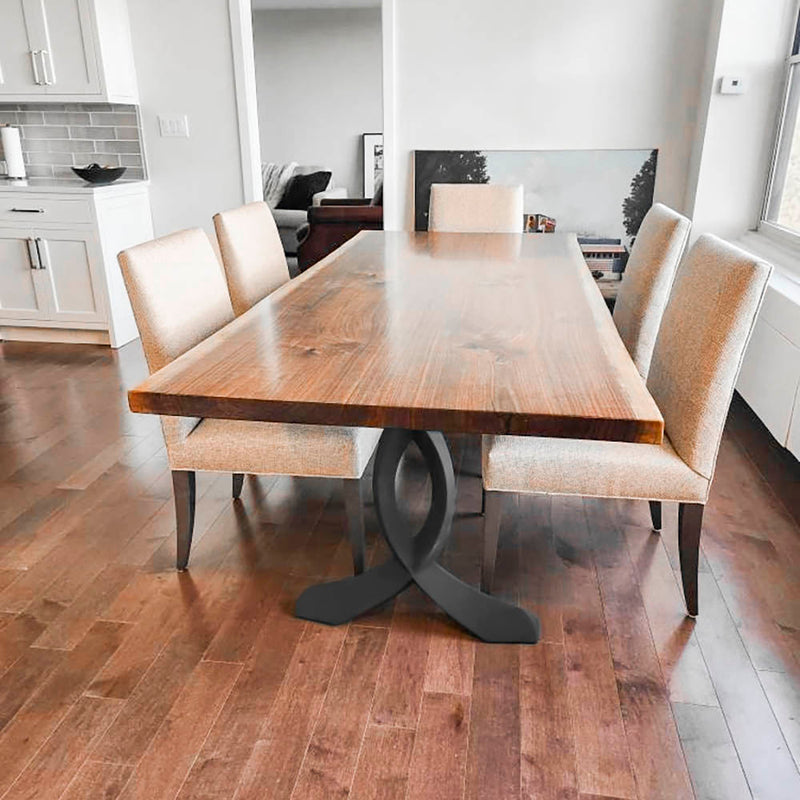Affordable and High-Quality Dining Room Table Legs for Every Budget
Affordable and High-Quality Dining Room Table Legs for Every Budget
Blog Article
Just How to Select the Perfect Eating Area Table Legs for Your Home Decor
Picking the optimal eating room table legs is a nuanced procedure that calls for mindful factor to consider of numerous components, including your space restrictions, aesthetic choices, and practical requirements. The interplay in between designs, measurements, and materials can dramatically affect the setting of your eating area, making it essential to approach this decision carefully.
Assess Your Dining Room
Assessing your dining space is vital for selecting the right table legs that match both looks and capability. Begin by measuring the dimensions of your eating location, consisting of ceiling height, flooring room, and closeness to other furniture. This info will aid figure out the ideal size and elevation of your table, which straight influences the selection of table legs.
Next, take into consideration the style and layout of your eating space. For instance, an open-concept layout may take advantage of table legs that provide visual lightness, such as slender metal or acrylic alternatives. Alternatively, an extra traditional setup may require tough wooden legs that provide a sense of permanence.
Examine the existing color combination and products in your eating area. Balancing the table legs with these elements produces a natural appearance that enhances the overall design.
Ultimately, a comprehensive analysis of your dining space will certainly direct you in making an informed decision, guaranteeing that your table legs not only enhance the aesthetic charm but additionally offer practical objectives.
Consider Your Design Preferences
When selecting dining-room table legs, it is necessary to assess your individual design choices, as they considerably affect the overall aesthetic of your dining room. Your option of table legs can either enhance or contrast with existing décor, making it critical to straighten them with your favored interior decoration style.
If your home leans towards a contemporary visual, consider smooth steel or minimal wooden legs that supply a clean, minimalist look. For a much more conventional strategy, luxuriant wood legs with intricate makings can include a touch of sophistication and sophistication. Industrial styles gain from durable, resources such as redeemed wood and steel mixes, reflecting a rugged beauty.
In addition, farmhouse and rustic styles commonly favor strong, chunky legs that stimulate a feeling of warmth and comfort. Alternatively, if your decoration is eclectic, you might choose non-traditional shapes or a mix of materials to produce aesthetic passion.

Evaluate Product Options
The selection of material for dining space table legs plays a critical role in both longevity and aesthetic allure. Typical materials include timber, steel, and composite choices, each offering unique attributes that can affect the general look and long life of your table.
Wood is a traditional selection, recognized for its heat and adaptability. Woods like oak and walnut give remarkable toughness and can be ended up in various discolorations to match any design. Softwoods like ache are extra susceptible to scratches and dents, making them much less ideal for high-traffic locations.
Steel legs, frequently crafted from steel or aluminum, show modernity and commercial appeal. They are resistant and highly long lasting to put on, making them appropriate for families with kids or frequent gatherings (dining room table legs). In addition, steel can be ended up in various colors, enhancing the personalization possibilities
Composite materials, such as MDF or laminate, deal price and varied styles. While generally much less resilient than strong wood or metal, they can still give a stylish appearance and are commonly easy to keep.
Eventually, More Info the material you select ought to line up with your lifestyle, visual choices, and the level this hyperlink of usage your dining table will certainly experience.
Determine Height and Dimension
Picking the proper height and size for your dining-room table is necessary for both capability and convenience. The typical elevation for eating tables commonly varies from 28 to 30 inches, permitting sufficient legroom for most individuals when seated. It is crucial to think about the dimensions of your dining area and the types of chairs you prepare to make use of.

Moreover, think about the proportions of your dining-room. A bigger table in a large area can create a grand atmosphere, while a smaller sized table functions well in more intimate setups. Inevitably, the ideal height and size will harmonize with your overall decoration and boost the eating experience for you and your guests.
Explore Customization Possibilities

Furthermore, the layout of the legs can be personalized to fit different designs, such as rustic, modern, or commercial. For example, tapered legs can evoke a mid-century modern feel, while beefy, block-style legs may reverberate with typical or farmhouse style.
Homeowners can also discover learn the facts here now shade surfaces, from all-natural wood spots to paint, allowing them to match or comparison with the tabletop and bordering decor.
Additionally, leg elevation can be adapted to accommodate details seating plans or individual choices, improving both convenience and performance.
Lastly, one-of-a-kind embellishments, such as makings or ornamental brackets, can better individualize the table legs, making the dining experience not just a statement however a meal item in the home. By considering these modification choices, home owners can produce an eating room table that absolutely reflects their uniqueness.
Final Thought
Picking the perfect eating space table legs requires mindful factor to consider of numerous factors, including the measurements of the dining space, design preferences, material longevity, and wanted height. Customization alternatives better boost the capability to attain a natural visual that complements the overall decor. By methodically examining these components, house owners can ensure that the selected table legs not just satisfy practical requirements however likewise add positively to the eating experience and setting of the home.
Choosing the perfect eating room table legs is a nuanced procedure that calls for cautious consideration of numerous aspects, including your area restraints, visual preferences, and sensible demands.Analyzing your eating area is important for choosing the right table legs that complement both aesthetics and performance.When figuring out size, determine the location where the table will certainly be placed to guarantee it fits pleasantly, permitting for at the very least 36 inches of clearance around the table for simple motion. A larger table in a spacious location can develop a grand setting, while a smaller sized table works well in more intimate settings.Choosing the perfect eating area table legs requires cautious consideration of numerous elements, consisting of the dimensions of the eating room, design preferences, product toughness, and preferred elevation.
Report this page